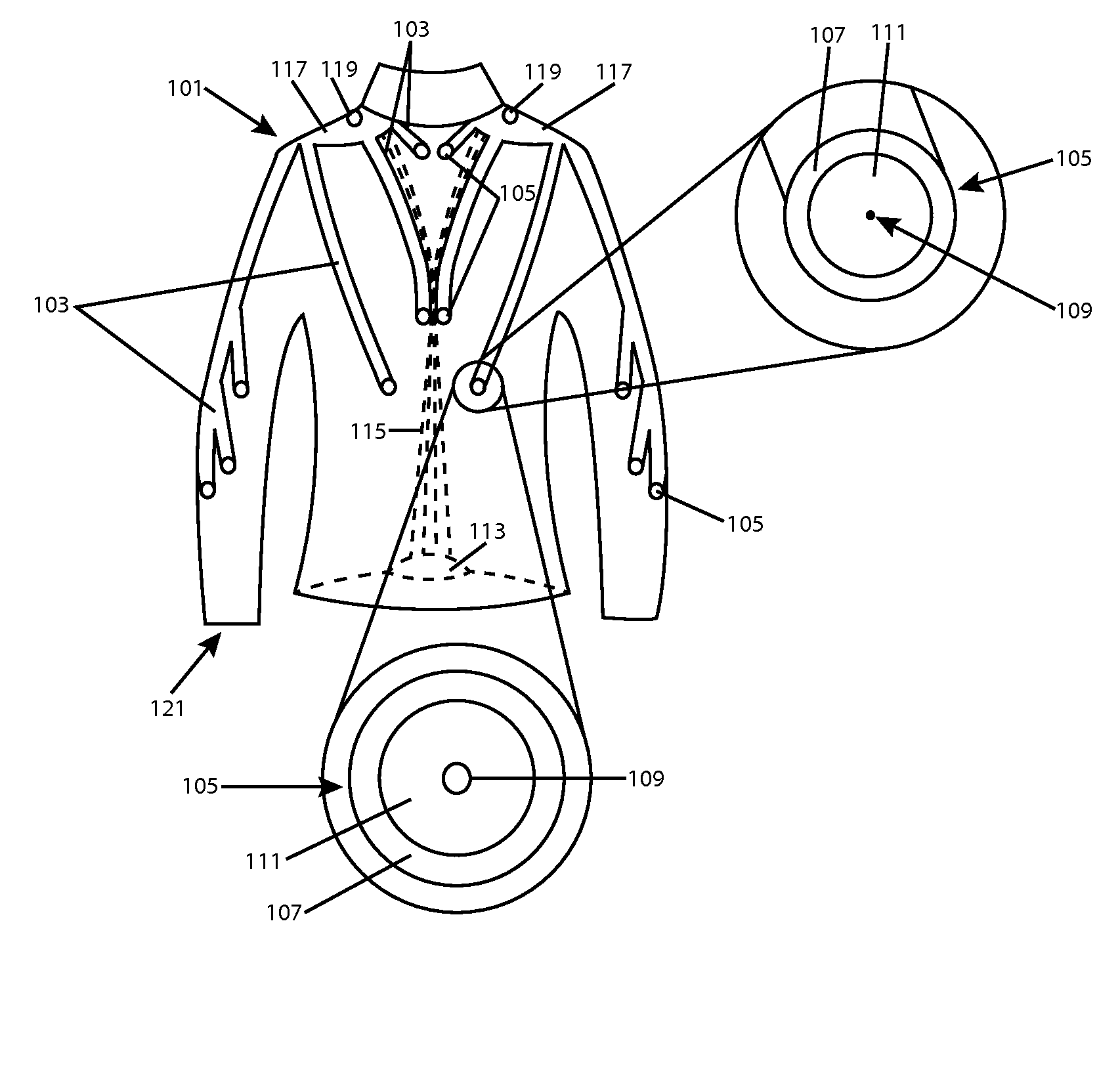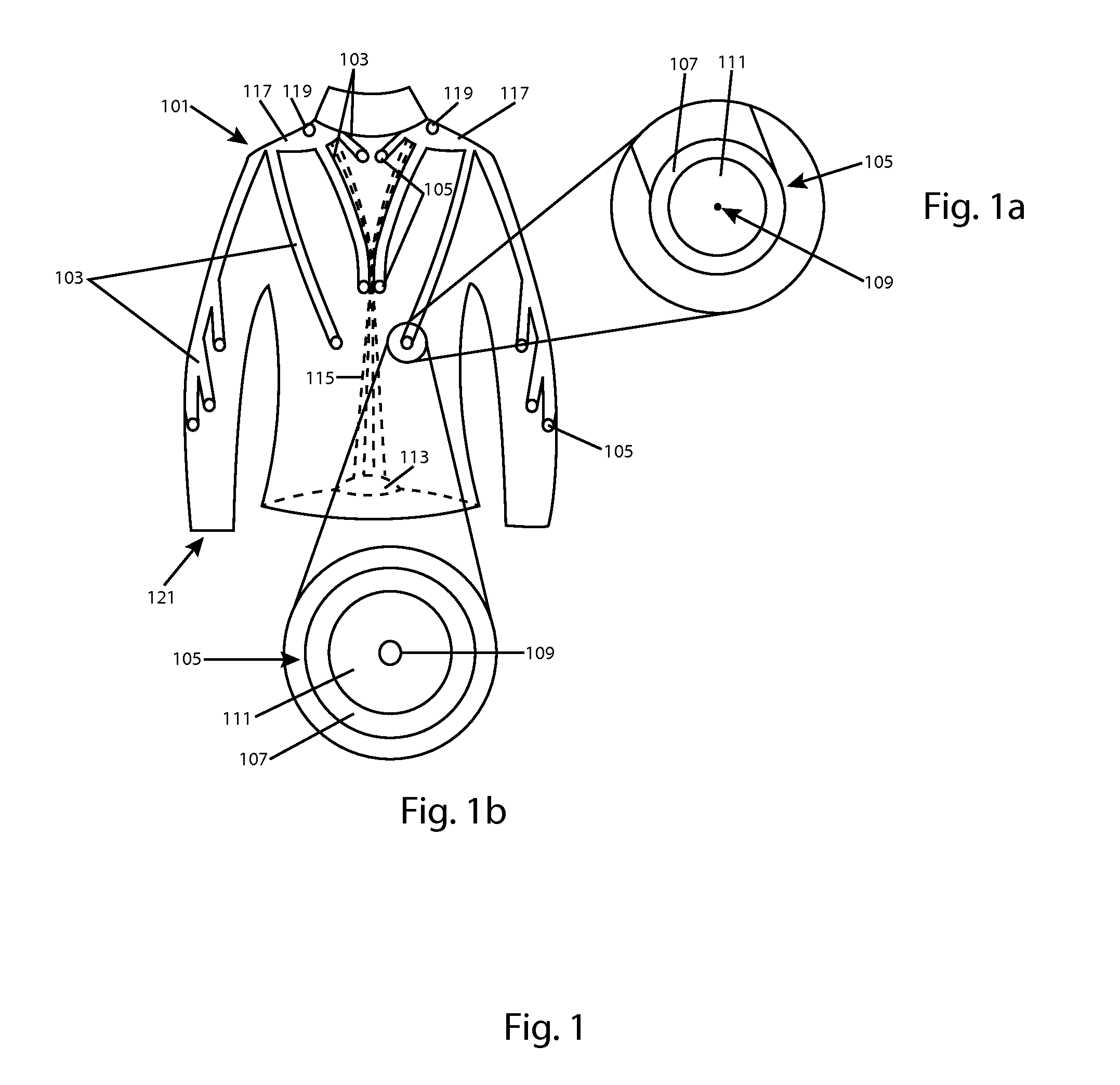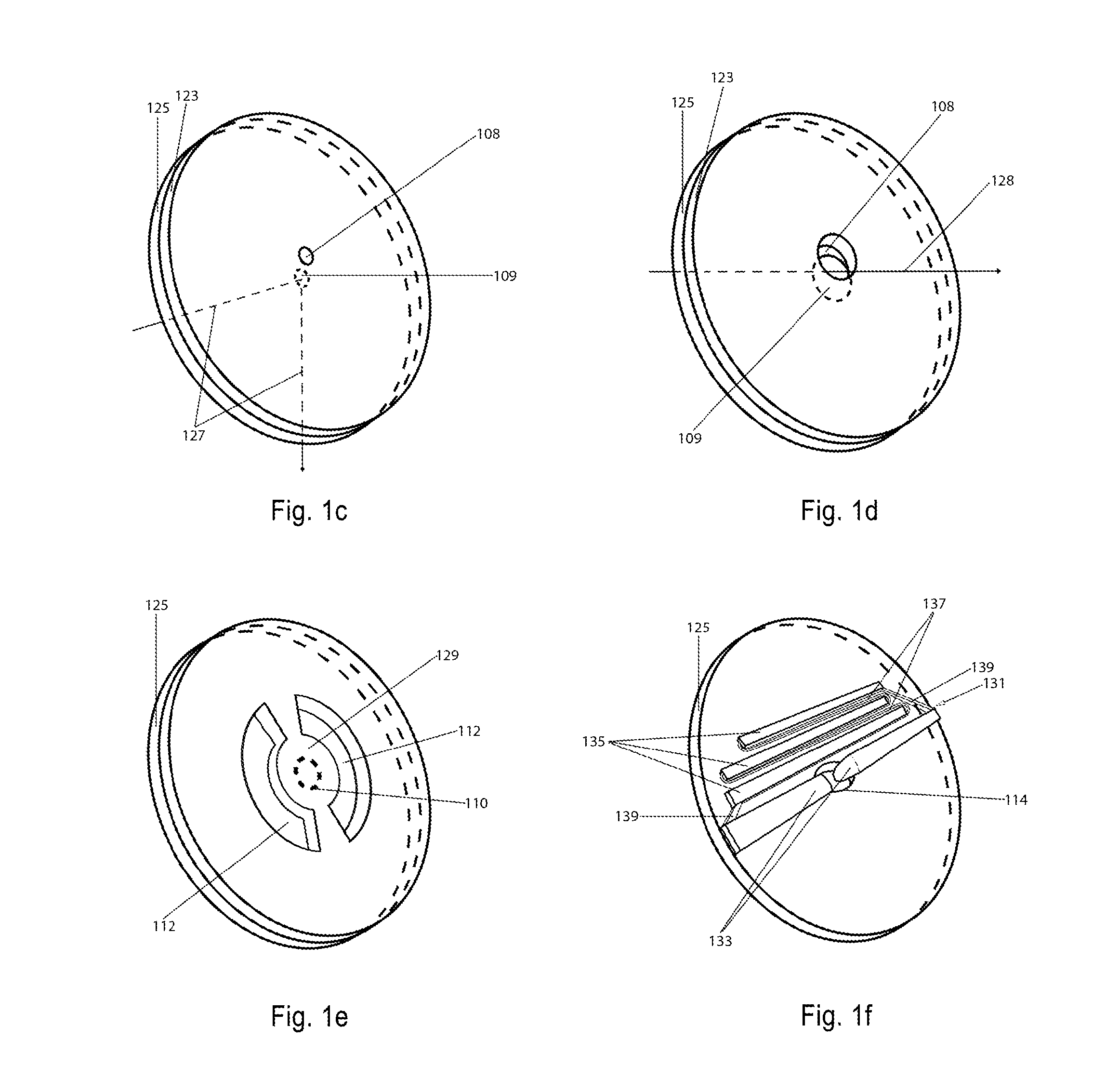Bodily Cooling Fluid Techniques
a body cooling and fluid technology, applied in the field of athletic apparel, supplements and equipment, can solve the problems of serious problems such as ineffectiveness, insufficient effectiveness, and serious problems such as body temperature drop, and achieve the effect of maximizing cooling
- Summary
- Abstract
- Description
- Claims
- Application Information
AI Technical Summary
Benefits of technology
Problems solved by technology
Method used
Image
Examples
Embodiment Construction
[0037]FIG. 1 is a front view of a long-sleeved athletic garment 121 associated with an exemplary variable coolant deployment matrix 101, in accordance with aspects of the present invention. A coolant fluid, gel, powder, solid(s), powder, fabric, gas or liquid formulation (or any mixture thereof), such as that with ingredients and preparation discussed in the remainder of this application (“coolant,”“fluid,”“coolant fluid” or “cooling fluid”), may be guided and variably-released by matrix 101. The matrix 101 may comprise open or variably opening / closing and or coolant-transporting, -releasing or -passing channels, pathways or tubes (“conduits” or “channels”), such as those pictured as conduit examples 103. Conduits 103 may terminate at variable ports, such as those pictured as exemplary ports 105. Ports 105 may release coolant upon detecting, or a control system and / or user detecting, a need to cool a user's body as a whole (about which the matrix is mounted) or in the locations at o...
PUM
 Login to View More
Login to View More Abstract
Description
Claims
Application Information
 Login to View More
Login to View More - R&D
- Intellectual Property
- Life Sciences
- Materials
- Tech Scout
- Unparalleled Data Quality
- Higher Quality Content
- 60% Fewer Hallucinations
Browse by: Latest US Patents, China's latest patents, Technical Efficacy Thesaurus, Application Domain, Technology Topic, Popular Technical Reports.
© 2025 PatSnap. All rights reserved.Legal|Privacy policy|Modern Slavery Act Transparency Statement|Sitemap|About US| Contact US: help@patsnap.com



